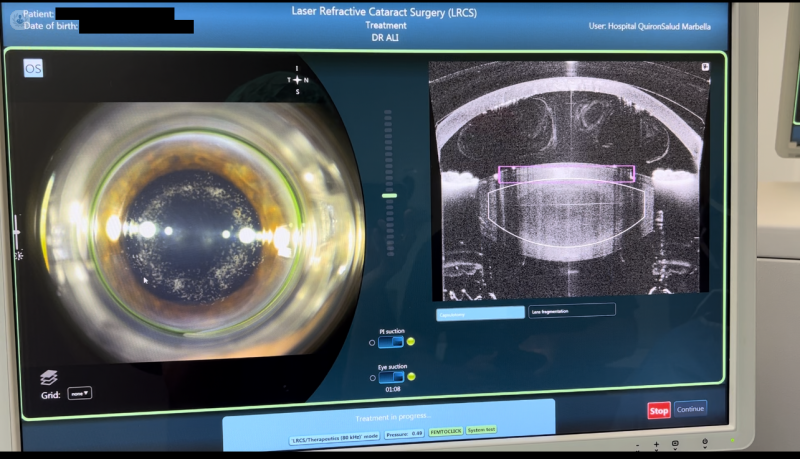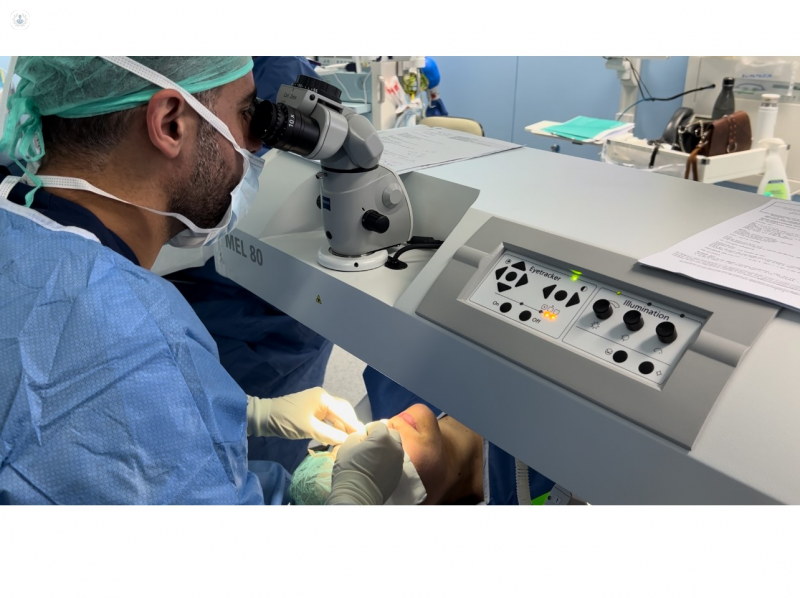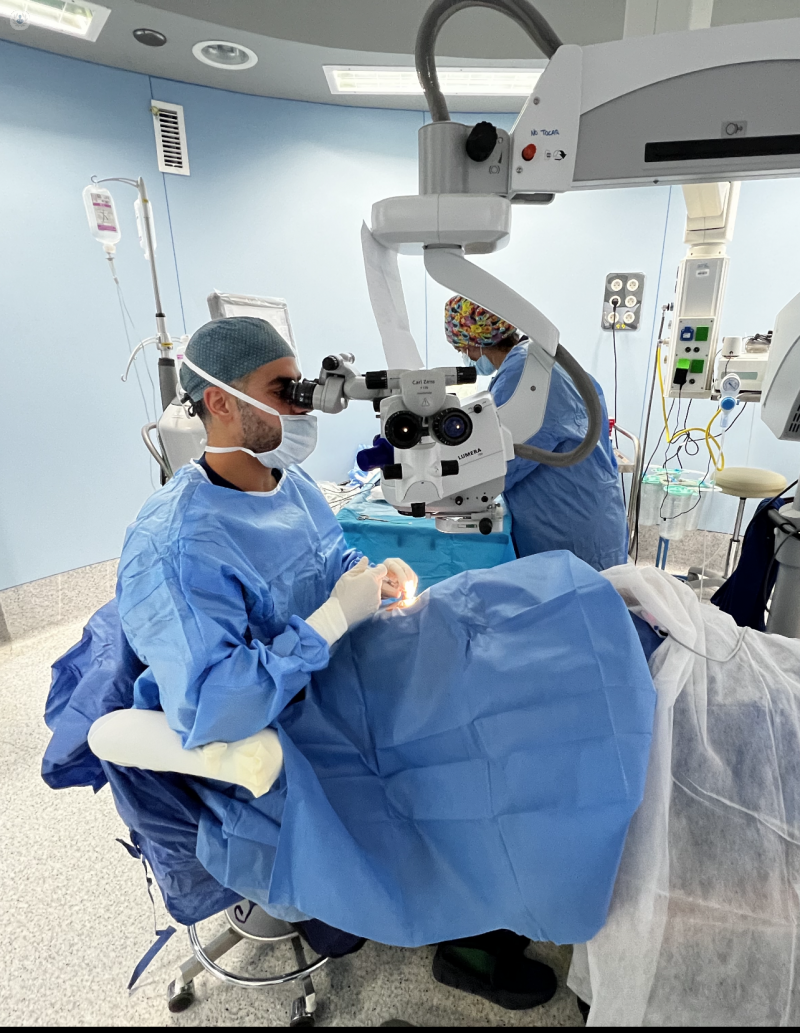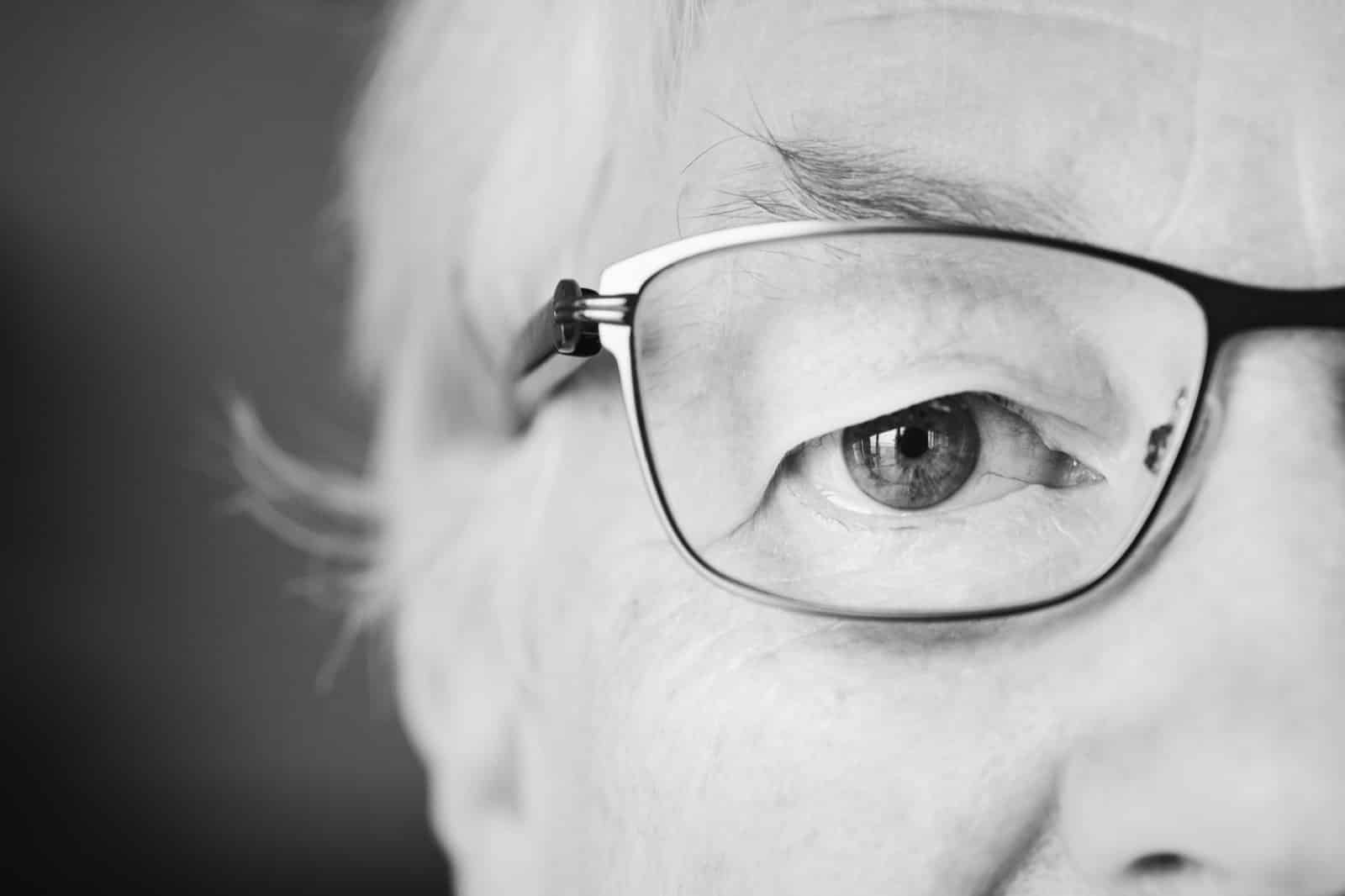If you are close to (or have already turned) 40, you have probably had problems reading small print in low light... But what can we do about it? We talk about presbyopia with Dr. Ali Nowrouzi, ophthalmic surgeon and specialist in the Ophthalmology service at Hospital Quirónsalud Marbella.

As a cornea and refractive surgery specialist, what is the challenge of treating presbyopia after the age of 40? What would you say are the best solutions to treat it?
Presbyopia is a very common age – related vision problem It is characterised by a progressive inability of the accommodative muscles of the eye to focus on near objects. It usually begins around age 40 and raises doubts among patients.
Without treatment, presbyopia can significantly affect quality of life, causing reading problems (inability to read small print, need for more light, diplopia, epiphora), headache fatigue or asthenopia).
Another major dilemma of presbyopia is the aesthetic discomfort caused by wearing glasses for some people, especially those who have never worn glasses before. Some patients are not interested in doing so, even in special cases such as reading a menu in a restaurant.
Optical solutions, including goggles y contact lenses are the first and most common approach as a treatment for presbyopia. Spectacles are generally assumed to be the most affordable instrument for correcting the symptoms of presbyopia; however, no spectacle lens currently available can fully restore the dynamic range of accommodation in the ageing eye.
Contact lens options for presbyopia include contact lenses for distance vision supplemented with reading glasses as a necessary complement for near vision, ranging from monovision correction (one eye) or a bifocal/multifocal correction.
It is very important to check the biomechanical parameters of the cornea and also other compromising problems such as dry eye and tolerance to contact lenses, as well as a special simulation during the complete ophthalmological examination, in order to correctly determine these optical devices.
The importance of this therapeutic approach is the main reason why we offer sophisticated testing in our clinic.
Thus, I have several specialised experts in the Cornea and Refractive Surgery Department to study this biomechanics with precision, as well as to be able to correctly prescribe personalised contact lenses for each of our patients.

As an active member of the European Society of Cataract and Refractive Surgeons (ESCRS), you participated in many clinical trials of eye drop treatments for presbyopia. Can you explain the mechanism of these treatments and how they could be a paradigm shift?
Presbyopia drops are a revolutionary new treatment on the horizon. Several companies are trying to launch miotic eye drops to increase the range of vision through a pinhole effect. without affecting distance vision and with minimal adverse effects.
VUITY (Allergan) is first with FDA approval for the treatment of presbyopia.
I had the opportunity to work with some of these new treatments, and it is important to note that these drops are not suitable for all types of presbyopic patients, so a thorough ophthalmological examination will be mandatory to prescribe these drops to a special group. of patients suffering from the initial stage of presbyopia, without relevant contraindications.
What is the concept of refractive lens exchange and what is its main benefit for presbyopia as a permanent and definitive treatment?
Refractive lens exchange, in which the eye's natural crystalline lens is replaced by a premium intraocular lens (IOL), can reduce or mitigate the need for reading glasses. Thus, there are various types of premium intraocular lens implants such as multifocal, extended depth of focus or accommodating intraocular lens implants. Current premium lens designs predominantly provide very good visual outcomes.
A thorough and accurate ophthalmic examination is essential to create a personalised selection of the premium lenses needed, based on the patient's demands, visual goals, lifestyle, working distance and hobbies. At our clinic we work with our patients to determine the best premium lens options to meet their needs, having dedicated a special department where we can perform this customised study.

What is your opinion on laser surgery for presbyopia?
In terms of laser surgery, monovision or multifocal laser, LASIK and PRK can be used to reshape the cornea and reduce the need for reading glasses in people with presbyopia.
Patients must be classified by precise and sophisticated preoperative studies for each of the different procedures, which are based on personal corneal topography and tolerance to preoperative simulation. Following this strict science-based protocol is absolutely necessary to choose the best personalised surgical approach to achieve optimal results for the patient's lifestyle and visual goals afterwards. laser surgery .
Presbyopia: glasses after 40?
If you are (or have been) in your forties, you've almost certainly had trouble reading small print in low light. But what can you do about it? We talk about presbyopia with Dr. Ali Nowrouzi, ophthalmologist and specialist in the ophthalmology department at Hospital Quirónsalud Marbella.
As a cornea and refractive surgery specialist, how would you define presbyopia as a real challenge after the age of 40 and what would you say are the common solutions to treat it?
Presbyopia It is a very common age-related vision problem characterised by a progressive inability of the accommodative eye muscles to focus on near objects. It usually begins in the forties with many patients having doubts. Untreated or under-corrected, Presbyopia can significantly affect quality of life.problems with reading (inability to read small print, need for increased illumination, diplopia, epiphora), headachefatigue or asthenopia).
The other major dilemma of presbyopia is the aesthetic discomfort of wearing glasses, especially for those who have never worn glasses before, and some patients are not interested in doing so even in special cases such as reading a menu in a restaurant.
Optical devices, including spectacles and contact lenses, are the first and most common approach to presbyopia treatment. Spectacles are generally assumed to be the most accessible instrument for correcting the symptoms of presbyopia; however, no spectacle lens currently available can fully restore the dynamic range of accommodation in the ageing eye.
Contact lens options for presbyopia include monofocal contact lenses for distance correction supplemented with reading glasses as a necessary complement for near vision, ranging from monovision correction (one eye) or bifocal/multifocal correction.
It is really important to check the biomechanical parameters of the cornea and also other compromising problems such as dry eye and contact lens tolerance, as well as to perform a special simulation during the comprehensive ophthalmological examination, in order to correctly determine these optical devices. The importance of this therapeutic approach is the main reason why we offer sophisticated tests in our clinic. I have several specialised experts in the Cornea and Refractive Surgery Department with me to study these biomechanics with precision in order to be able to make the correct contact lens prescription, personalised for each of our patients.

As an active member of the European Society of Cataract and Refractive Surgeons, you participated in many Presbyopia Drop clinical trials. Explain the mechanism of these treatments and how you could change the rules of the game.
Presbyopia Drops is a revolutionary new treatment on the horizon. Several companies are trying to launch miotic eye drops to increase the range of vision through a pinhole effect without affecting distance vision and with minimal adverse effects.
VUITY (Allergan) is the first with FDA approval for the treatment of presbyopia.
I had the opportunity to work with some of these new treatments. It is important to keep in mind that these drops are not suitable for all types of presbyopic patients, and a comprehensive ophthalmological examination is mandatory to prescribe these drops to a special group of patients suffering from the initial stage of presbyopia, without any relevant contraindications.
What is the concept of refractive lens exchange and what is its main benefit for presbyopia as a permanent and definitive treatment?
Refractive lens exchange, in which the eye's natural crystalline lens is replaced by a premium intraocular lens (IOL), can effectively reduce or mitigate the need for reading glasses through the use of various premium intraocular lens implants, including extended depth multifocal lenses. focus, or accommodate intraocular lens implants. Current premium lens designs predominantly provide very good visual outcomes.
It is really important to perform a thorough and accurate ophthalmological examination in order to create a personalised selection of the premium lenses needed, based on the patient's demands, visual goals, lifestyle, working distance and hobbies. At our clinic, we work with our patients to determine the best premium lens options to meet their needs, having dedicated a whole special department where we can do this. personalised study.
What is your opinion on laser surgery for presbyopia?
In terms of laser surgery, monovision or multifocal lasers, LASIK and PRK can be used to reshape the cornea and reduce the need for reading glasses in people with presbyopia.
Patients must be qualified by accurate and sophisticated preoperative studies for each of the different procedures based on personal corneal topography and preoperative simulation tolerance. Following this strict science-based protocol is absolutely necessary in order to choose the best personalised surgical approach, with the goal of achieving optimal results for the patient's lifestyle and visual goals after laser surgery.













